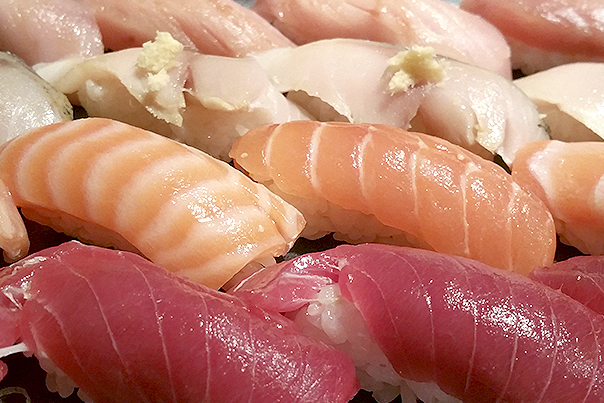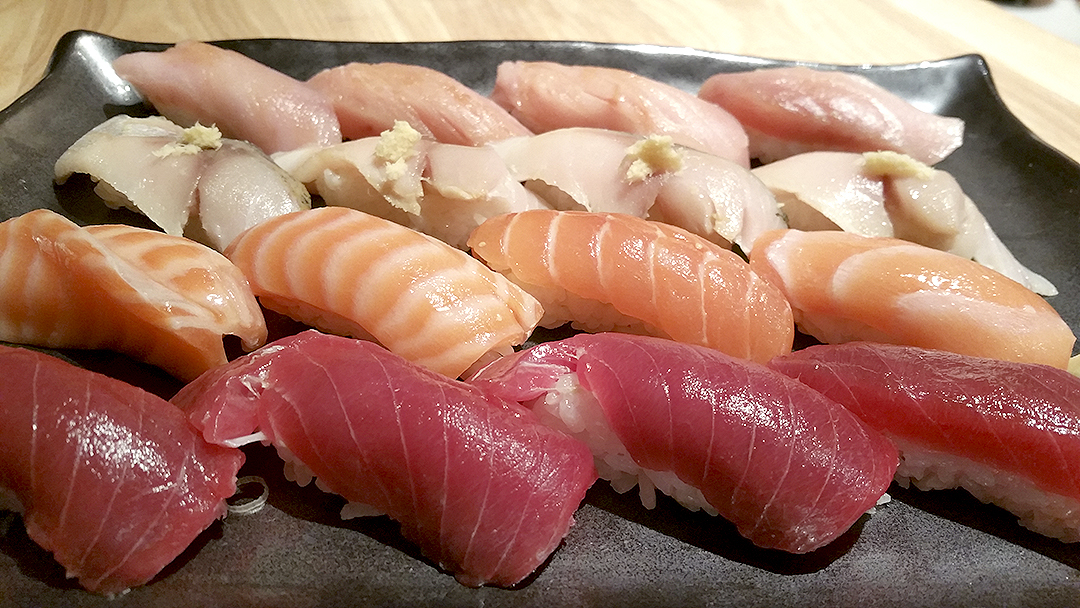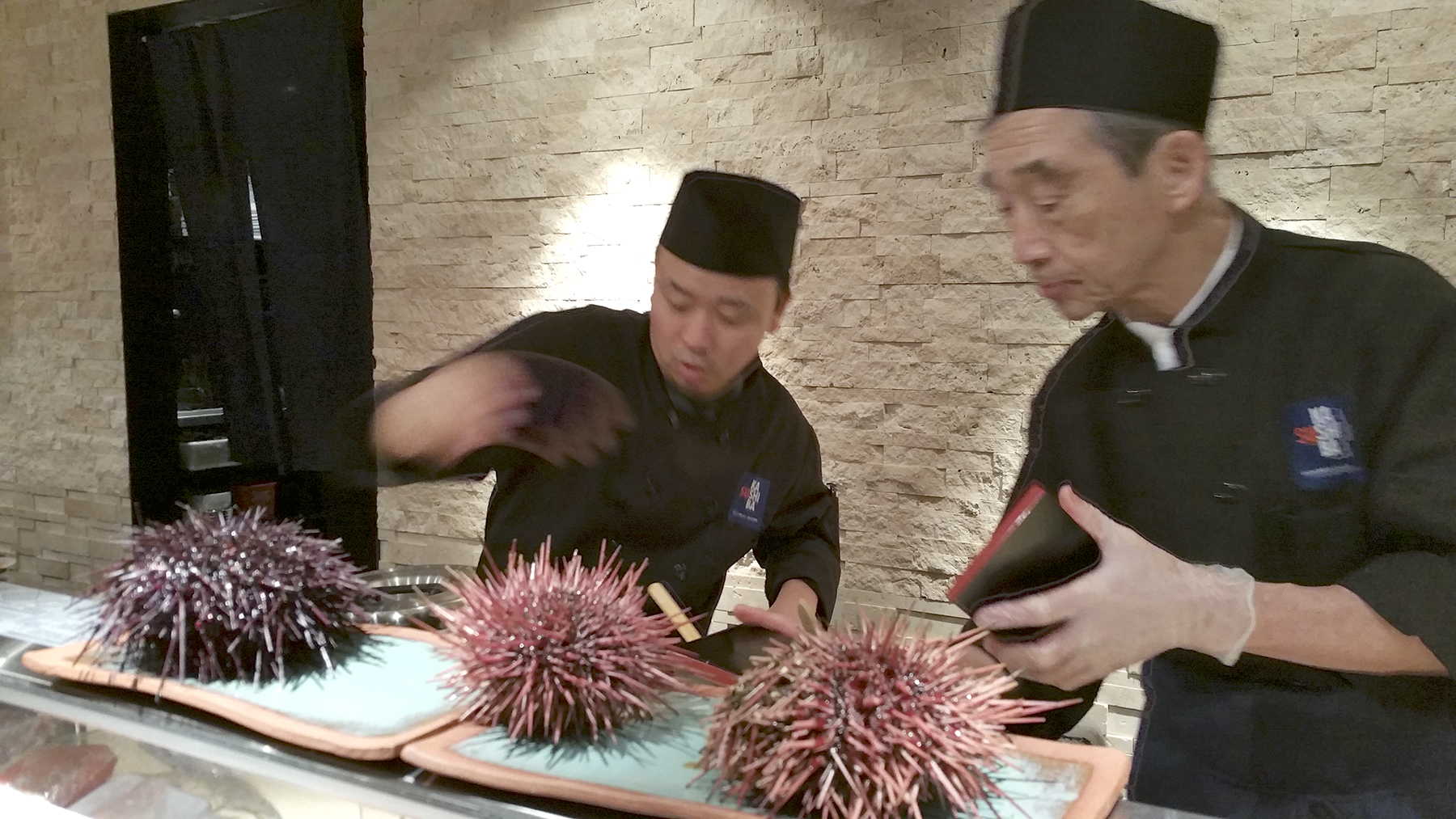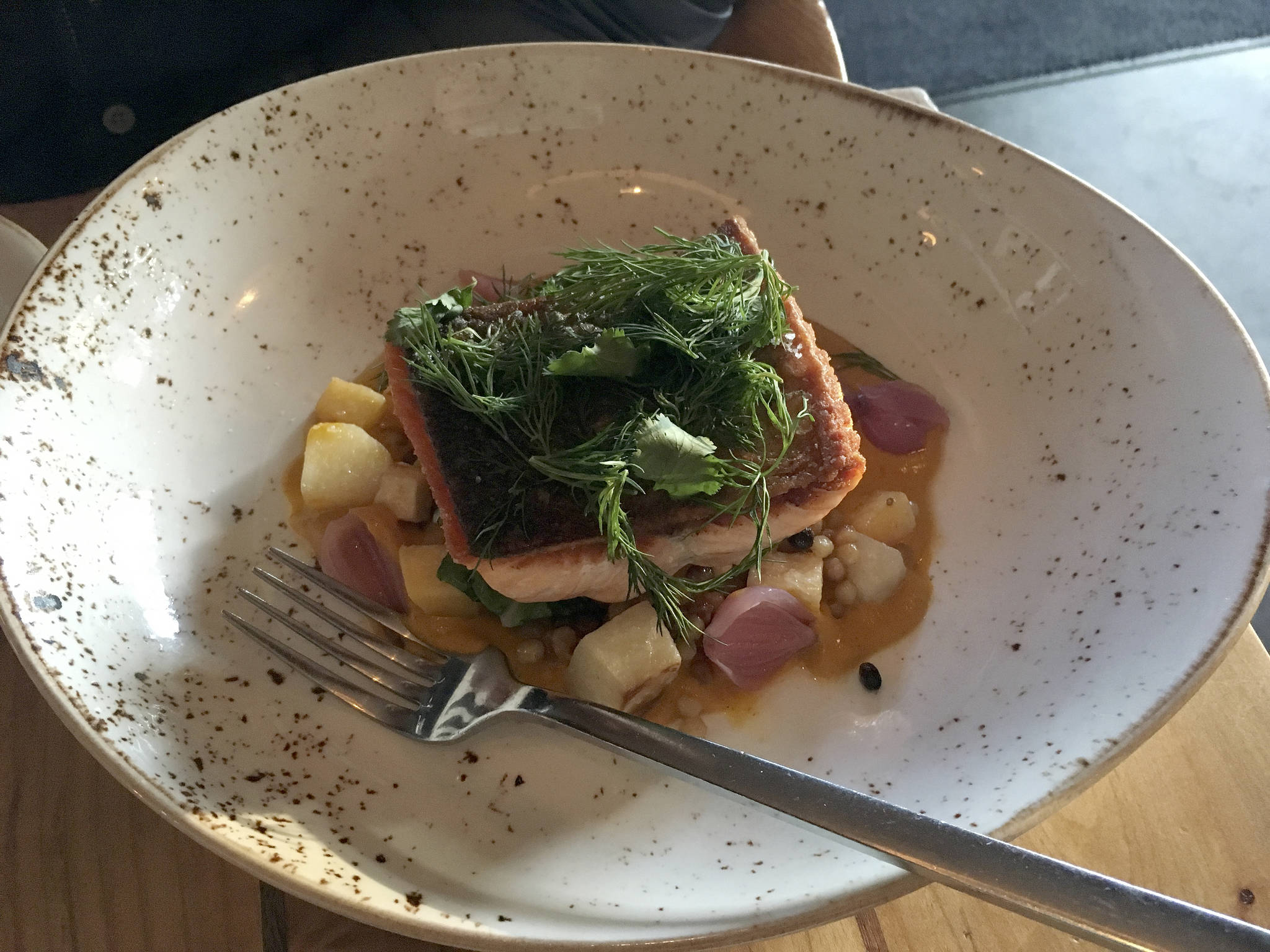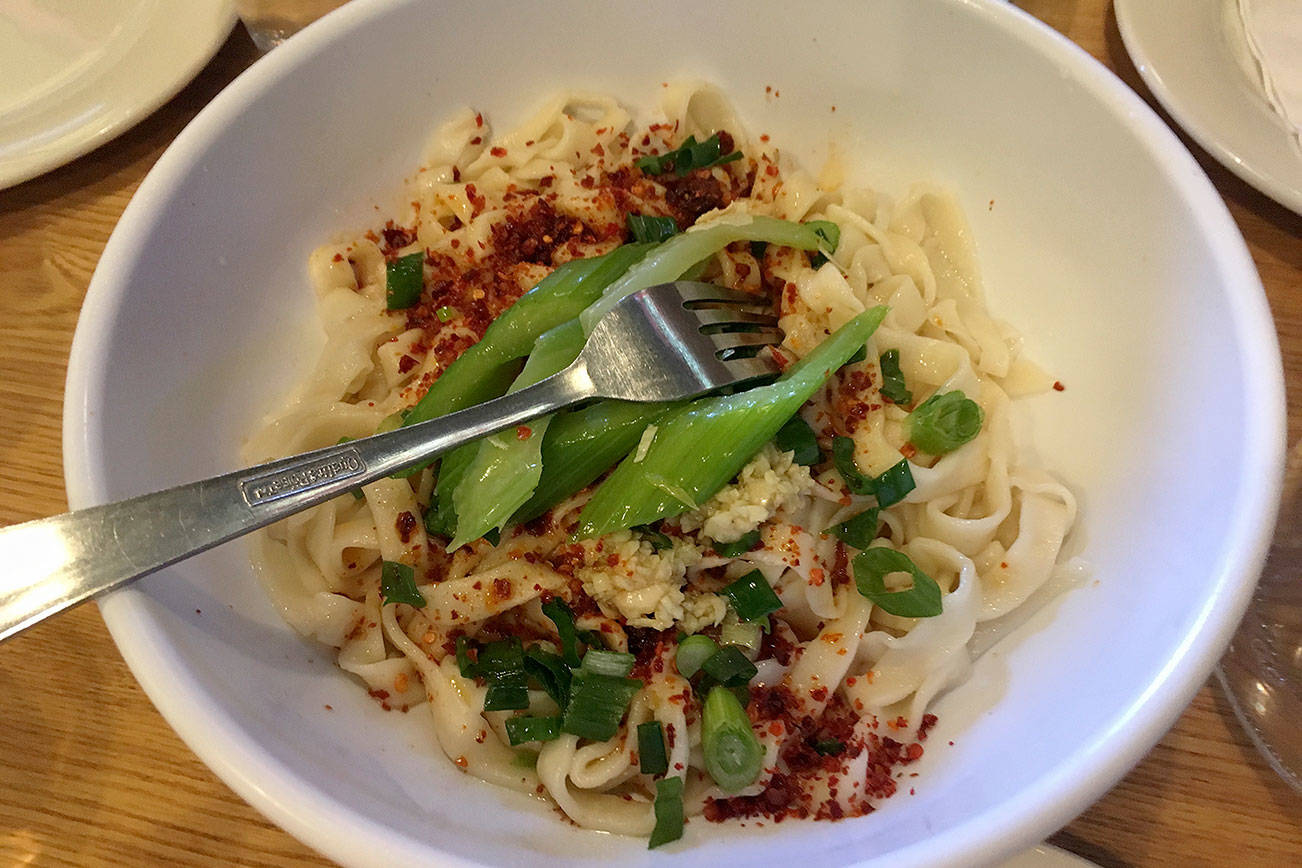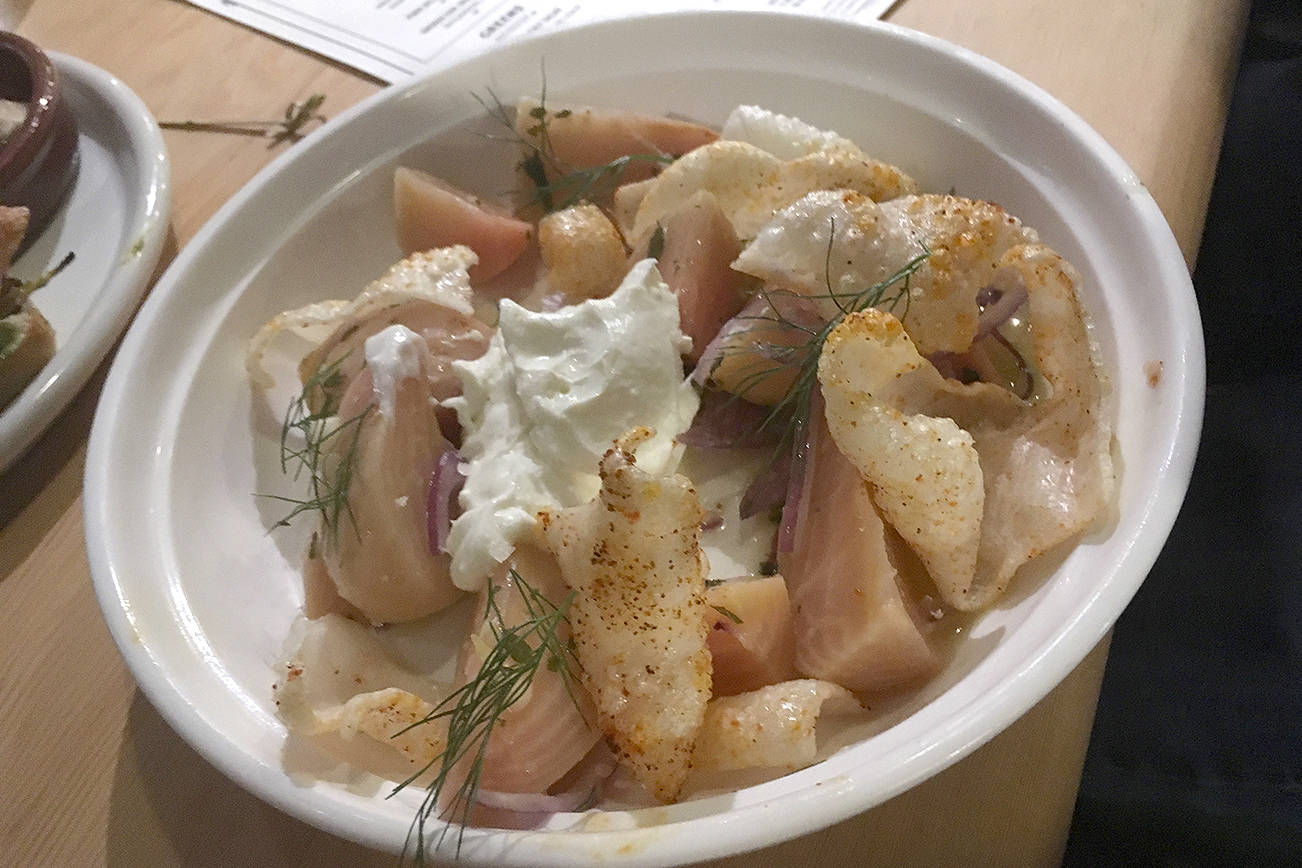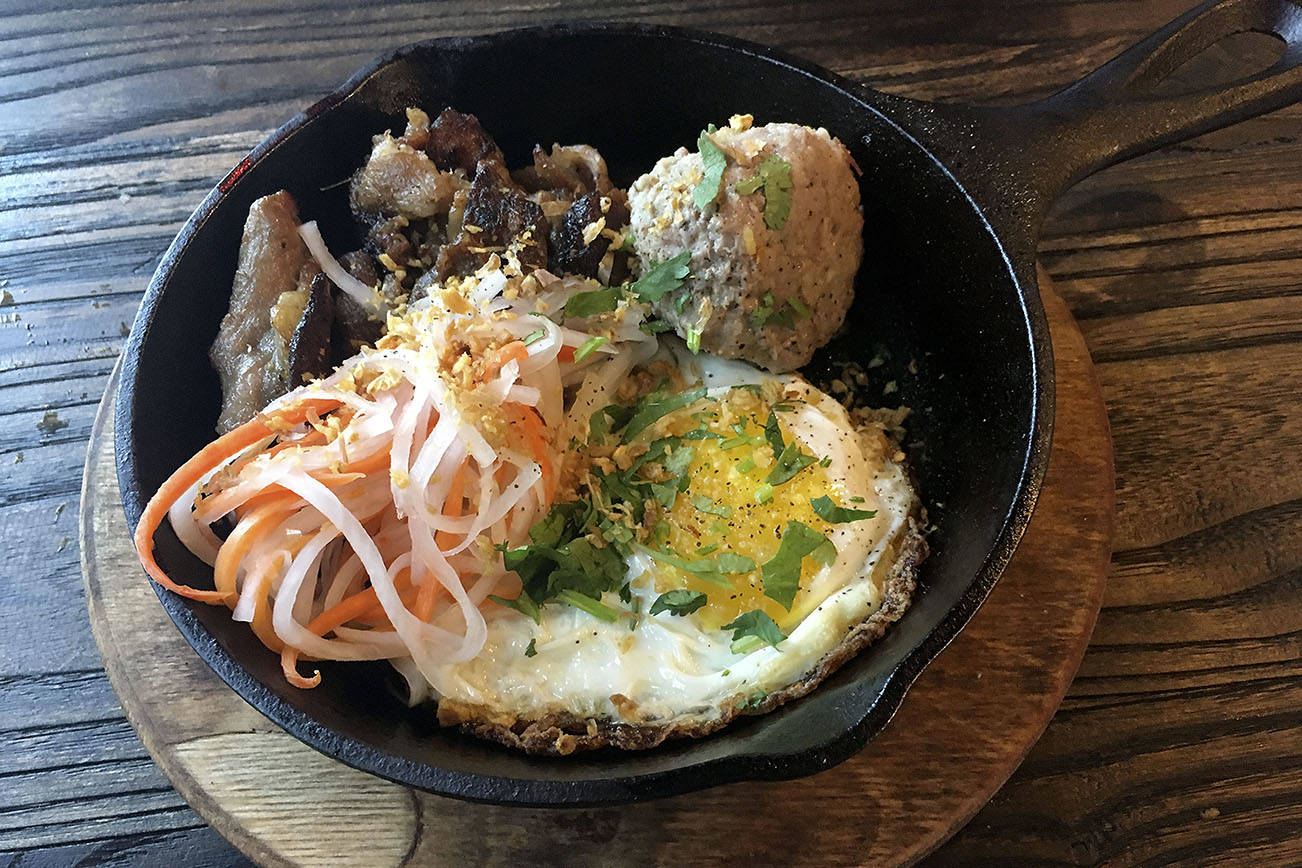Chef Shiro Kashiba’s new home in Pike Place Market was certain to become a Canlis-like destination, something to check off a Seattle must-do list or a gathering spot for a special occasion. But, fortunately—and perhaps surprisingly—despite its rarefied nature, Sushi Kashiba (86 Pine St. #1, 441-8844) is also extremely welcoming and casually elegant. You could come here on a whim on a Wednesday, and you should.
For starters, there’s the location. Nestled in Post Alley at Pike Place Market, among the tiny collection of shops and restaurants that surround The Inn at the Market, this is a venue at once hidden and accessible. The petite space contains multiple rooms—including a dining room, the working sushi bar, and a separate bar area—from which diners can look out over the glowing red Market sign and, further, to Puget Sound. To the south, the waterfront Ferris wheel sneaks into view as well.
The interior has been designed to allow that sense of place to dominate, while also bringing in small, understated nods to a modern Japanese aesthetic. The low ceiling is covered with the lightest blond wood, and above the sushi bar thin tree branches painted white hang in a line. Behind the chefs, a wall made of imperfectly placed white stones accents the pale wood of the bar.
If given the choice to eat at the sushi bar, by all means go for it, particularly if you’re dining in a pair. There you are likely to witness first-hand the artistry of Kashiba, a Seattle institution and nationally acclaimed chef who as a young man trained in Japan under the famous Jiro Ono of Sukiyabashi Jiro, a three-star Michelin restaurant that was the subject of the 2012 documentary Jiro Dreams of Sushi. It is quietly thrilling to watch him still work the sushi line alongside his chefs, humbly serving customers at the far end of the bar with a stoic but blissful look on his lined face.
Before you go in for the bar experience, however, there are some things you should know that our server seemed strangely inept at clarifying, despite her friendliness. You will get a menu, and on it will be a lovely assortment of hot and cold a la carte items (more on those later). At the bottom, the only mention of sushi is “Sushi Bar Omakase, price may vary for each guest.” If you know a little something about sushi, you may very well understand that “omakase” translates to “chef’s choice.” It’s something many sushi bars offer—a chance to be adventurous and let the chef decide the fate of your meal. However, it usually comes with a variety of price options based on a number of pieces. Here, our server simply told us that it was chef’s choice after we puzzled over the menu for a bit, and then added that we should let the chef know when we were about 80 percent full. So was I committing to a larger bill than I might anticipate? I had to ask.
She then brought us another sheet, filled with dozens of sushi items and their prices. While not every single item available at Sushi Kashiba is on this menu—the sushi varies often based on freshness and availability—it at least gave us a reference point, particularly around prices, which were surprisingly reasonable at $3 to $5 per piece. After that, I breathed easy and told our chef what I absolutely didn’t want, and then left the rest to him and enjoyed the ride. (The server also didn’t tell us that it is possible to get a prix fixe sushi set, one for $75 and one for $85, which also include rolls if you prefer a more scripted experience.)
Our chef was the most animated of the six, loud and gregarious, despite a very strong, hard-to-understand accent. His first word of advice—more a friendly instruction, actually—was to not use any soy sauce. This fish was too fresh, too perfect, he essentially told us, to be sullied by a soy dunking. He was absolutely right, given both the quality of the product as well as the light and varied touches of sauce the chefs effortlessly brush onto individual pieces—from sweet to pickle-y—or the quick smoky glaze from a blowtorch.
Unconvinced by my claim that I didn’t like raw shrimp, he also talked us into the shrimp “two ways,” which could threaten to become a bit of a shtick, but was fun nonetheless. Placed on the bar before us for about a half-minute were two huge live prawns, their beady eyes staring us down, their legs and tentacles twitching. Seconds later we were served the raw body, which may have given a final quiver before I whisked it into my mouth and savored its sweet, oceanic brine. Next came the head, lightly fried in tempura batter. He was right again; turns out I do like shrimp sushi!
A tuna set featuring the bluefin variety came as toro (the belly), otoro (even fattier and more decadent), and another way that I couldn’t catch (perhaps chutoro?). Salmon likewise came three ways, and included sockeye and king. All of them gave way on the tongue, with barely any chewing, and varied subtly in texture and color, from saturated coral to milky mauve.
Though I was disappointed we didn’t get any uni (it was there and I could have asked), I was delighted by the smallish smelt, a Puget Sound staple, and by the assertive but not pungent Spanish mackerel. My dining partner and I each had 10 pieces, and while that may not sound like a lot, we added a couple of a la carte dishes and were pleasantly full.
Though I generally don’t go for tofu, I couldn’t resist trying their agedashi tofu, a classic dish of tofu lightly coated and fried in potato starch served with grated radish (and ginger in this case) in a dashi broth. Dashi, a staple stock broth of Japan, used to poach fish or add umami to any dish, is simply made with water, dried kelp, and bonito fish flakes that give it an ever-so-light hint of the sea. Here, however, the savory broth also has a sublime and subtle sweetness, most likely from the addition of mirin, that makes the silken tofu irresistible. Fortunately, the dish comes with a spoon, as you’ll want to finish it off even after the tofu is gone. We also ordered the Chicken Karaage, essentially Japanese fried chicken wings, here served “tulip cut” style (think lollipops) allowing you to hold the “stem” (the bone) as you bite and suck the juicy top of meat.
If you’re used to sharing a few glasses of cheap hot sake with your sushi, you may be disappointed here. It’s available only by the glass (starting at $10) and bottles (starting at $16). I went for a $15 signature cocktail instead, a combination of gin, Dolin Blanc, elderflower, and shiso liqueur that may well be the best drink I’ve had all year. The balance of sweetness with the singular flavor of shiso—that hard-to-define aromatic, woodsy blend of mint, basil, sage, and maybe sour plum—was so delicately rendered I wished it were available by the bottle. It was a just-right accompaniment to the meal, and a kind of microcosm of the restaurant’s understated perfection.
What made the meal all the better was the bill. After venturing guesses at the total—both of us coming in around the $200 mark—I was pleasantly surprised to find a $136 price tag (granted, we had only one alcoholic beverage). Leaving at the lovely hour of 7 p.m. on a sunny evening, it was a treat to walk the Market’s cobblestone streets in relative quiet. Vendors were shutting down, and many of the stores had already closed. Piroshky Piroshky, however, was still open, and—given its burgeoning lines since Anthony Bourdain came to town and blessed it—I was practically beside myself with joy to find only two people in front of us. With just a little room left in our stomachs, we shared a rhubarb pastry and sat on a bench on the waterfront, appreciating the superb meal we’d just finished and the particular charm of our city’s incredible market—from the top-rate restaurants to the cheap but delicious food stalls that inhabit it.
